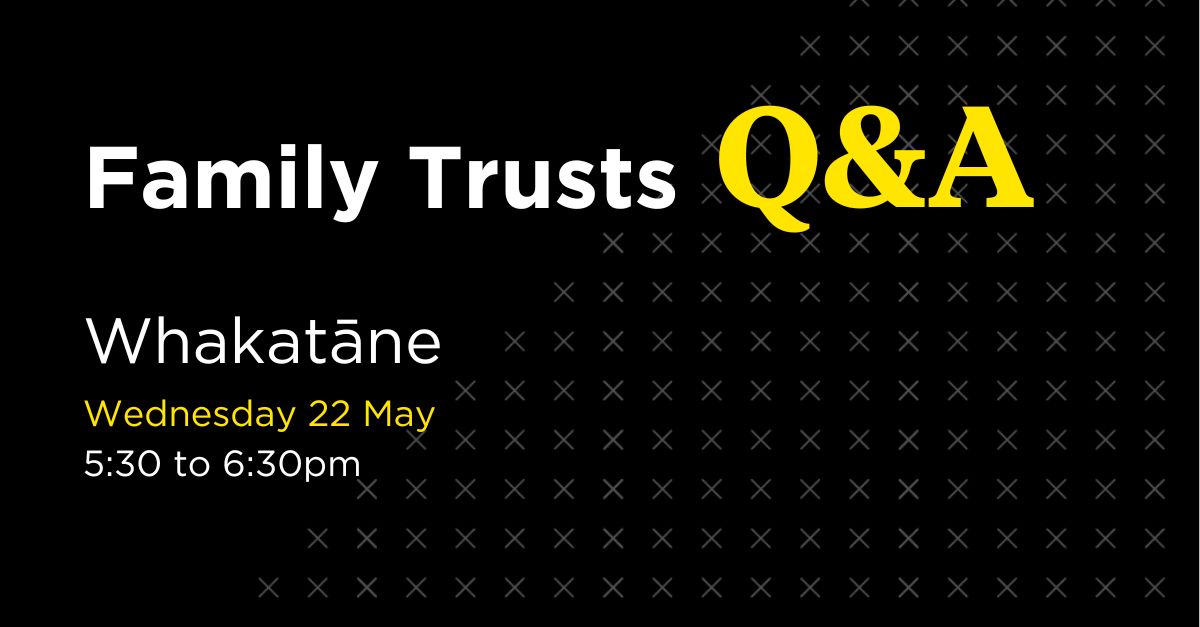Papakāinga development – turning aspiration into reality
This article was published in the November 2014 edition of the Resource Management Journal.
Introduction
The recently announced Māori Housing Strategy cites planning restrictions as a key aspect of why Māori are under-represented in housing ownership. This article explores the increasing push by tāngata whenua for papakāinga housing development on multiple-owned Māori land and how this interfaces within the Resource Management Act 1991 (“RMA”) regulatory framework.
After setting out the context for Māori aspirations to establish papakāinga, this article goes on to consider the role District and Regional planning documents have had in these developments. Using papakāinga in Western Bay of Plenty / Tauranga as an example, the article explores some of the key challenges faced and how those involved sought to overcome the RMA planning hurdles.
Housing affordability is without doubt high on the radar across New Zealand. While recognising that papakāinga can form only part of a wider solution for housing needs, the authors suggest that proactively facilitating papakāinga development through the planning framework presents a real opportunity to address Māori housing affordability – and one that is still largely untapped.
To take up the opportunity in a meaningful way, territorial authorities that are yet to do so need to include objectives, policies and rules specifically enabling papakāinga in their second generation district plans, and regional plans need to ensure similar treatment for such developments in a consistent and integrated manner.
This article suggests that further impetus for change may come through the proposed RMA reforms and the introduction of an explicit requirement to consider housing affordability in Part 2. However, to have a more direct impact on the lower order planning framework for papakāinga the development of national policy and / or standards to support the legislative amendments would give greater certainty to the outcome.
What is Papakāinga?
“Papakāinga” is a term that can encapsulate a range of development on Māori land, although it is most commonly used in the context of residential development. “Kāinga” translates in this context to a village or settlement, while the “papa” is a reference to Papatūānuku or the earth-mother, which adds an element of nurturing. The concept of a nurturing place to return to underlies the reason for establishing papakāinga, particularly when these are set up for the elderly or for young families.
Although often viewed as rural development, this is probably more a happen-stance since a large portion of multiple-owned Māori land is in rural areas. Similarly, papakāinga has typically been associated with Marae, however this is not necessarily the case. The return of lands through Treaty settlements may see more urban papakāinga development (such as the papakāinga development in Orakei, Auckland and the Te Hou Hou block in Papamoa, east of Tauranga).
Driven by the specific aspirations and needs of the respective landowners, papakāinga will vary in terms of both focus and design. These projects are not necessarily for the elderly or for young families, and are also not always remote from towns and main centres. Who will live in the papakāinga very much depends on how the whanau, hapu or iwi prioritise their housing plans. Nor is there any fixed design pattern for papakāinga, although there is typically a higher level of density and a more communal focus in terms of living arrangements. Again, the layout and design will depend on the preferences of the particular whanau, hapu or iwi, as well as factors like the presence of a Marae and the tikanga of how buildings should be orientated.
These differences present challenges to both those promoting papakāinga developments and those trying to regulate or facilitate them.
Barriers to uptake
The drive for papakāinga was (and is) an aspect of looking to find solutions to the long term decline in Māori housing standards, in particular the need to reverse the trend of declining Māori home ownership, and the corresponding increase in long-term rental accommodation, particularly in urban areas (Ministry of Business Innovation and Employment He Whare Āhuru He Oranga Tāngata / Māori Housing Strategy: Directions 2014 to 2025 (July 2014), page 4). It also stems from a desire by iwi and hapu to utilise their remaining landholdings and to improve social standards and health.
Establishing a papakāinga development is a considerable undertaking. Apart from the planning restrictions faced under the RMA, the key matters to address are:
- The legal and practical challenges arising from multiple-owned Māori land. To enable decision-making about the land in question there is much ground work involved to set up a trust or incorporation or to just locate and engage with multiple owners. Establishing papakāinga may involve creating interests where the occupier owns the house but not the land such as through licences to occupy issued by the trust or incorporation (these are common) or occupation orders granted by the Māori Land Court and to which family members may succeed. There are also challenges where the development involves an alienation (for example, because a mortgage or long-term lease is required). The efforts of the Māori Land Court to help whanau, hapu and iwi navigate these requirements and also to work in with local authorities has been extensive and invaluable.
- Start up capital will always be a significant factor. Loans from banks can be challenging given that most security in New Zealand is over a freehold tenure. There are inherent problems with security over a building – issues such as depreciation can result in the value of the mortgage exceeding the value of the secured asset. In the late 2000s changes in the funding approach saw a range of contestable funds set up to operate in tandem with existing loan-based models (although funding from the Social Housing Unit, a branch of the Ministry of Business Innovation and Employment, has now ceased and the only real option is through loan schemes such as the Housing New Zealand Kainga Whenua loans).
- Financial viability is also a major challenge given the need to balance debt and construction costs against what is inherently intended to be low cost living. As the costs to build on Māori land are generally higher given there is often no infrastructure to rural sites, innovative solutions with smaller and smarter house designs need to be employed. These developments are often made affordable by the land being provided by the trust or incorporation at no cost or by only requiring minimal rents. At the Tamapahore Marae Village (discussed later) for example, the hapu expressly sought that rents paid by the tenants, who are either retired or elderly, not exceed 25% of their income.
- Locational constraints mean that it is often a case of fitting a papakāinga into any given land block, as opposed to a carefully selected and zoned greenfield site. As a result of historical developments, a large portion of Māori land is often located in marginal areas which can create significant servicing problems (water, sewerage etc).
The additional layer of complexity and cost then added by the RMA and other statutory requirements becomes all the more problematic when considered against this backdrop.
Numerous guidelines, handbooks, websites, internal Council policies etc. have been created as part of the push to provide for papakāinga housing in order to guide applicants through the numerous legislative and regulatory requirements a papakāinga development is likely to face, including the RMA, Te Ture Whenua Māori Act 1993 (“TTMA”), the Local Government Acts and the Building Act 2004.
This forms the context for the Māori Housing Strategy, which makes an example of some of the work in the Bay of Plenty that is explored in more detail in this article. The Māori Housing Strategy seeks to actively promote the removal or minimisation of the hurdles that face those looking to undertake a development on multiple-owned Māori land.
The role of papakāinga-specific provisions
In terms of central government responses, the Auditor General recommended local authorities improve co-ordination on the issue of Māori housing and noted the problem of district plans limiting the ability to provide housing (Office of the Auditor-General Government planning and support for housing on Māori land (August 2011), page 16).
Planning rules on Māori housing in second generation district and regional planning documents are now relatively common. For RMA practitioners at least, these provisions are just the tip of the iceberg and do not necessarily reflect the much larger underlying body of work. The papakāinga rule frameworks in Western Bay of Plenty / Tauranga and elsewhere (including Hawke’s Bay, Northland and Auckland) represent the end result of a collaborative process involving a range of stakeholders, including iwi, hapu, local authorities, government agencies, as well as the Māori Land Court.
The Western Bay of Plenty / Tauranga experience
The driver for changes to the two relevant district plans (the Tauranga City Plan and the Western Bay of Plenty District Plan) was very much a result of trying to overcome the difficulties experienced by projects such as the Horaparaikete Papakāinga.
Located on rural land outside Welcome Bay, a suburb of Tauranga, on the back road to Te Puke, the Horaparaikete Papakāinga was initially conceived in 2004. The concept was for 5 dwellings to take up approximately 1 hectare of a 32 hectare block of multiple-owned Māori land. An Ahu Whenua Trust was established for this purpose (a significant undertaking in its own right). The intention was to cluster houses around a central communal house with satellites in order to maintain the rural productive use of the land (dry stock farming). The activity required a full discretionary resource consent because it exceeded the two lot limit for permitted dwellings in the Rural Zone under the Tauranga District Plan. The consent application went through a costly publicly notified process. Financing came from a combination of fundraising, a Tauranga Moana Trust Board loan and a variety of grants, with construction beginning in 2008 and completed some two years later. A major challenge was fulfilling servicing requirements given the rural location, such as the need for fire fighting water supply and upgraded power supply.
In the wider Western Bay of Plenty area, what followed was a lengthy process to raise the profile of the challenges facing papakāinga, and to directly lobby both central and local government for change to facilitate these developments. The planning response has seen provisions included in both the Tauranga City Plan and the Western Bay of Plenty District Plan, both of which were reviewed in the late 2000s.
For Tauranga City, the final outcome in the now operative Tauranga City Plan is twofold.
- First, a general papakāinga rule in the Rural Zone allows 3 to 10 dwellings on multiple-owned Māori land as a controlled activity, and a maximum of 30 as a restricted discretionary activity. A specific set of provisions is also included for an urban papakāinga located in the suburb of Bethlehem.
- Second, Rural Marae are recognised through spot zoning, with set numbers of houses for each Marae (for example, 50 independent dwelling units can be built in the Waikari Rural Marae Community Zone as a permitted activity provided the relevant standards are met).
The rules also manage issues such as amenity and the rural land resource, with suitable modifications such as requirements for an outline development plan (for Rural Zone papakāinga), or modified amenity rules in the Rural Marae zones (for example, amended overshadowing requirements so that this only applies to the boundaries of the zone, and not between internal buildings). For amenity reasons, housing at Urban Marae are also recognised through specific zoning and rules, but the area of land required for each dwelling mirrors the minimum lot size required for the underlying Residential Zone.
The Mangatawa Papakāinga Village located near Tamapahore Marae in Papamoa, east of Tauranga is an example of a development that was able to utilise these new provisions. Ten two-bedroom homes were initially established on a hill-side site, and were situated to look back to Mauao (Mount Maunganui) and Tuhua (Mayor Island), both of which have strong cultural significance. As the land was within the specifically developed Tamapahore Rural Marae Community Zone in the new Tauranga City Plan, up to 35 houses could be constructed as a permitted activity. An initial ten houses were constructed in partnership with Housing New Zealand, who provided a loan and grant to establish the papakāinga. Although the hapu retains ownership of both the land and houses, these are leased to Housing New Zealand, with tenants selected from the shareholders provided they are over 60 years of age. A further 22 houses will be established outside the Housing New Zealand partnership. The process was much smoother and less costly, owing largely to the planning framework being specifically designed to accommodate papakāinga on the subject site.
In the Western Bay of Plenty District Plan (the majority of which was made operative in June 2012), papakāinga development is provided for in the Rural Zone as a controlled activity, with the numbers of dwellings able to be constructed on multiple-owned Māori land set at 5 if located on an unsealed road, and 10 if sealed (the two Islands in the District are simply allowed 10 houses on multiple-owned Māori Land regardless of whether the roads are sealed). All papakāinga require an average of 2000m2 of net land area per dwelling, so the lot size will also govern the size of any papakāinga. On sealed roads, 11 to 30 dwellings can be constructed as a restricted discretionary activity. In both cases, either a site plan (in the case of the controlled activity) or a structure plan (in the case of the restricted discretionary activity) requires Council approval, with consideration given to a range of issues such as housing location and servicing, or more widespread issues where higher numbers of dwellings are planned.
The changes led by the wide range of stakeholders in the wider Western Bay of Plenty area also culminated in the development of Te Keteparaha Mo Nga Papakāinga – Māori Housing Toolkit. Considerable input came from a number of iwi and hapu, the Western Bay of Plenty Māori Housing Forum, the relevant local authorities, SmartGrowth (an organisations charged with spatial planning in the Bay of Plenty), central government agencies (including Te Puni Kōkiri), the Māori Land Court, and a range of individuals and consultants. The Toolkit is a step-by-step guide designed to assist Māori to develop papakāinga proposals on multiple-owned Māori land and covers a much wider range of issues than just the RMA planning framework.
While not essential to the utilisation of the Toolkit, with the assistance of funding from Te Puni Kōkiri, its practical implementation has been enabled through a series of facilitated workshops with Māori Land Trusts to help advance a project through the five steps (or stages) of the Toolkit process. The workshops are attended by a range of technical experts and other agencies who have input into the detail of the papakāinga.
Importantly the relevant Bay of Plenty regional plan dealing with non-reticulated effluent systems (the On-site Effluent Treatment Plan) also contains a suite of rules that apply to housing located with the Tauranga City and Western Bay of Plenty local authority areas (outside the Tauranga City Urban Area) and developed using the Toolkit process. To be consistent with district plan thresholds, systems servicing up to 10 houses and associated community facilities have controlled activity status, with Regional Council retaining control over matters such as discharge volumes and the size and location of land application areas. As explained in the plan, developments that use the Toolkit will proceed through a specific development pathway, with the support of Toolkit partners. This process is said to lessen the risks of adverse effects from multiple units reliant on on-site effluent treatment systems on the same property, with Regional Council committed to assisting to ensure that technical and information supply requirements are met.
The planning provisions described above now sit under the recently made operative Bay of Plenty Regional Policy Statement 2014 which contains direct policy support for provision to be made for the development of multiple-owned Māori land for papakāinga, Marae and associated community facilities.
The critical point of these provisions is to create an easier regulatory pathway for papakāinga and, although still likely to require technical input, the move to favourable activity classifications has given certainty of outcome and has made the application process considerably less daunting for anyone looking to develop papakāinga.
While this article focusses on the Bay of Plenty, the issues are common across the country. Similar moves to recognise the challenges and minimise them through the planning framework have taken place in a range of areas, including Hawke’s Bay, Northland and Auckland to name a few.
How can the RMA better play its part?
Perhaps the biggest challenge facing papakāinga development comes from the complexity of modern RMA plans. Added to the inherent challenges of developing Māori land, the prospect of an arduous consenting process can be a bridge too far and the difference between a papakāinga development remaining an aspiration and it becoming a reality. It is suggested that the model developing in a number of areas in New Zealand whereby the issues are addressed with the involvement of a range of stakeholders is a sound way to develop papakāinga provisions.
The involvement of regional councils is also important and allows for an holistic consideration of potential difficulties. To the extent possible, a consistent approach between district and regional plans is particularly important to ensure that favourable district plan provisions are not undermined by additional regional consenting requirements.
For a number of reasons, planning documents are geared towards a ‘one house per lot’ paradigm in terms of managing adverse effects. Absent papakāinga-specific provisions, applications face a struggle when assessed against provisions designed to manage issues such as the control of the fragmentation of rural land as a result of lifestyle subdivision, or to provide for urban amenity through controls such as minimum yard requirements.
While in no way a criticism (there is clearly a need to manage such issues), papakāinga development will not raise the same issues, or at least not to the same extent, given the more collective approach (for example, the use of clusters and desire to have close connections with neighbours rather than privacy).
It is suggested that the long-delayed RMA reforms may well assist in this regard, albeit indirectly. The 2013 reform documents proposed that the RMA directly recognise housing affordability in section 6 (Ministry for the Environment Resource Management Summary of Reform Proposals (August 2013), page 29). This will add another layer of support, beyond section 5 (enabling cultural wellbeing) or section 6(e) (recognising and providing for the relationship with ancestral lands), when seeking papakāinga-specific provisions.
While the Housing Accords and Special Housing Areas Act 2013 may assist with the issue of Māori housing affordability to the extent that any special housing area take place on Māori land, something more specific is needed to address the different characteristics of papakāinga and of its development. The authors suggest that to have a more direct impact on the lower order planning framework and to ensure consistency the government should consider using RMA tools already at its disposal such as the development of national policy and / or standards to really push for and assist these developments to get off the ground.



